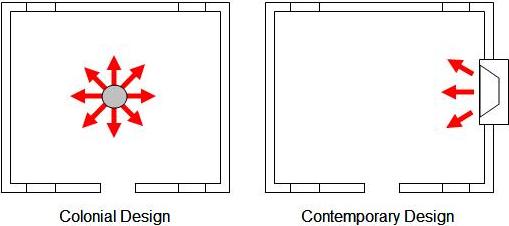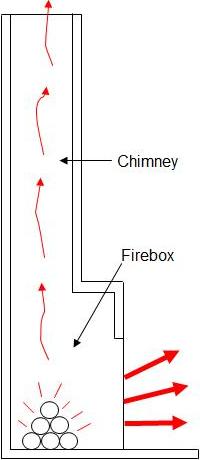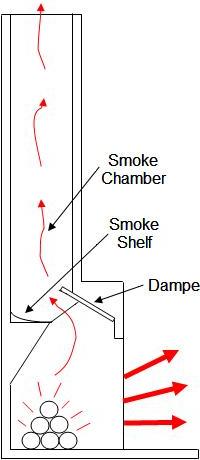Over the centuries fireplaces have often functioned as the only heat source for buildings. Not only were they important as heat generators, but fireplaces also provided the facilities for cooking. Heat from the fireplace was critical to the warmth and welfare of the building’s inhabitants, making its efficient design and operation very important.
Fireplace design was continually developed and improved, when it evolved into a primitive form of central heating. By providing a better distribution of heat, the central heating concept rendered the fireplace obsolete.
Although the use of a fireplace as the sole heating medium has become extremely rare, perhaps with the exception of those who are very energy conservation conscious, summer cottages or homes in warm climates that only make occasional use of a fireplace on cool nights, fireplaces continue to incorporated in contemporary house plans, regardless of the sophistication of the heating system.
Whether or not a fireplace satisfies a functional or aesthetic need, its efficient design and operation are still important. Fireplaces, like the sun, emit heat through radiation. The fire transmits heat directly to the surrounding objects. These objects in turn heat the air adjacent to them. New England settlers located their fireplaces at the center of the house, where maximum heat could reach the residents and the chimney heat could be retained, as shown in Figure 1. The advent of central heating freed the fireplace from its primary responsibility as a heat source and allowed the house builder to place the fireplace wherever they desired.

Figure 1 - Fireplace positioning
While a fireplace may take various external forms or be placed in different locations, the basic principles regulating its successful functioning remain the same.
Note: The proper design of a fireplace is not simple. It took masons repeated errors to arrive at the adequate proportions and requirements for a safe and smokeless fireplace. We do not recommend that a beginner get involved in tricky design solutions unless he has a thorough understanding of the principles behind fireplace design. If he does not, he may find himself with a great-looking fireplace that smokes him out of the room.
Fireplace Design:
Traditionally, fireplaces have been built out of masonry. The beauty of such fireplaces is closely tied with the professional skills of the mason. We’ve come to admire them not only for their appearance and warmth but also for the craftsmanship and effort involved in their construction. Not everyone, however, can become a skilled mason overnight or afford to hire one. New solutions to the problem of fireplace design and construction have brought about the development of a wide range of prefabricated fireplaces, available commercially from a variety of manufacturers.
There are two basic models. One is a free-standing decorative unit requiring only minimal installation; it is complete in itself. The second model provides you with “the works” – that is, all the interior apparatus of the fireplace. This model is later finished in a number of different materials. Whether you are building your own masonry fireplace from scratch, installing an ornamental fireplace, or encasing a prebuilt unit, it is helpful to understand the mechanisms that make them work.
There are two essential components in a fireplace: a firebox which holds the fuel while combustion takes place, and a chimney, which exhausts smoke and combustion gases, as shown in Figure 2. In addition to these, a fireplace incorporates other elements that refine its operation, such as a damper, a smoke shelf, and a smoke chamber, as shown in Figure 3.

Figure 2 - Basic fireplace & chimney

